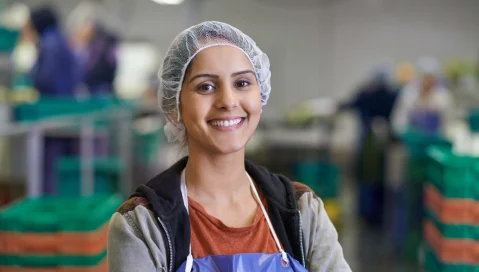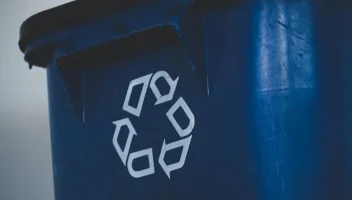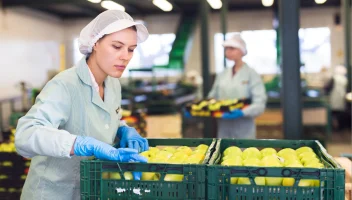5 Strategies to Reduce Food Waste and the Facilitating Features of Food ERP Solutions
5 Strategies to Reduce Food Waste and the Facilitating Features of Food ERP Solutions
5 Strategies to Reduce Food Waste and the Facilitating Features of Food ERP Solutions
6 Avr 2022
Jack Payne
The statistics on food waste are startling. According to the UN Environment Programme, an alarming one-third of all food produced globally each year is lost or discarded without being eaten. In terms of mass, that’s 1.3 billion metric tons—equivalent to that of roughly 217 million adult African elephants or 87 million mid-sized sedans.
To attach a dollar figure to it, we’re looking at an alarming $1 trillion invested in producing food that isn’t consumed at all. And for a more human way of framing this urgent problem, consider that saving just one-quarter of what’s currently being wasted would help to feed 870 million hungry people in the world.
As a food industry professional yourself, this is no doubt concerning from both a public welfare standpoint as well as a financial perspective. You also know the importance of brand reputation and how closely corporate responsibility and sustainability are tied to consumers’ perceptions, as well as your business’s bottom line.
All this being said, it’s clear that your organization would be best served by taking proactive steps now to reduce the unnecessary losses you incur. To that end, let’s take a look at five strategies to employ to reduce food waste at your facilities and the ways in which enterprise resource planning (ERP) solutions facilitate them.
1. Prevent Product Damage
Physical damage that renders a food product unfit for sale is a significant source of loss in the industry. For this reason, one of the first steps you should take in your efforts to reduce your waste is properly training all personnel in safe harvesting and handling techniques that preserve the integrity of the goods with which they work.
Improper packaging can also result in damage to an otherwise perfectly valid item, which represents sunk costs that cannot be reclaimed. To rectify this issue, your research and development teams should follow packaging trends, look into how to best optimize the boxes, bags and containers used for your products, with attention to the materials incorporated and the nature of the foods in question.
An advanced, industry-specific food ERP system—like Aptean Food & Beverage ERP—has the features you need to set packaging specifications precisely, ensuring that the vessel used fits the parameters that you define.
2. Keep Spoilage to a Minimum
Spoilage is another fairly obvious cause of food waste for companies like yours. To improve your outcomes on this front, look to implement smart storage and transportation condition sensors and controls, especially those that help you manage temperature and humidity in real time.
A first-expiry, first-out (FEFO) material picking order is also vital for getting the most out of your goods before they go bad. Your employees should be instructed on the importance of this measure, as well as how they will go about determining what to select when pulling ingredients for a run.
Food ERP platforms can integrate with the connected devices you use in your storage areas, giving you immediate insight on any deviations from accepted ranges so that they can be corrected. Such a solution can also help enforce your FEFO picking methods by automatically collecting expiration dates and freshness windows and clearly indicating to staff what materials should be used next.
3. Limit Overfilling and Giveaway
No food and beverage business would want to be accused of shortchanging customers by underfilling their bottles or including a lower item count than advertised. For that reason, many manufacturers resort to hedging on the side of excess and allowing some tolerance for overfilling packages, but the truth is that this “giveaway” is another significant source of waste.
To really dial in your volumes and quantities, you should turn to IoT-enabled scales and digital imaging devices that can produce reliable results and pipe them into your database in real time for flagging of errors. You’ll also want to make sure that your recipes are finely tuned and do not include excess amounts of any ingredients.
We mentioned the capabilities of food ERPs to sync with smart equipment before, and here again those features will come in handy. What’s more, the robust formula management tools that these solutions offer give you the control you need to set material quantities and volumes with precision, preventing consumption over what is required for the product at hand.
4. Repurpose and Recycle
While some of your items will inevitably have to be scrapped due to contamination or quality issues, there’s also great potential to repurpose items that are imperfect but still safe to eat. Take the examples of companies like Misfits Market and Full Harvest, which have made their name on reclaiming “ugly” produce and fighting one of the largest causes of waste in the food industry.
You should also look into ways in which you can reroute byproducts from the manufacture of your items for use in other settings and goods. This practice—also known as “upcycling”—is perceived positively by consumers, with 76% saying they’d be “willing” or “absolutely willing” to try a food made with upcycled ingredients.
If your organization chooses to pursue this waste mitigation measure, a good food ERP system will come in handy. The software makes introducing new vendors and clients a simple matter with their complete supply chain controls, making the process of delivering your imperfect goods and byproducts to those businesses that can utilize them much easier.
5. Streamline Your Supply Chain
Speaking of the supply chain, one final tactic for cutting back on your food waste is optimizing the flow of materials from suppliers to your facilities and downstream to their final destinations in retail and foodservice. Considering transportation and service disruptions continue to be an issue in the pandemic era, whatever you can do to avoid these delays or become more resilient to them, the better.
Your company could, for instance, try to work with more local suppliers to reduce travel time, distance and fuel consumption. That should also serve to help with getting your materials in a timely fashion, allowing you to make good use of them before spoilage or expiration ever become a factor.
A sound food ERP platform will not only provide the supply chain management functions you need for streamlining the journey of your ingredients and finished goods, but also traceability features that automatically capture important data at critical tracking points (CTPs). With the right solution on your side, you can be confident that you’ve done all you can to facilitate the smooth movement of products without compromising on safety or compliance with regulations.
The Right ERP To Fuel Your Food Waste Reduction Initiative
If your organization is serious about decreasing food waste and wants to use a food ERP system to maximize your results, you’ll find yourself presented with a number of options. Here at Aptean, we believe our best-in-class products speak for themselves, but it’s worth noting that Aptean Food & Beverage ERP has been selected by more than 1,000 businesses in the past and recently received a prestigious award.
Beyond that, though, choosing to partner with Aptean is a smart decision thanks to our decades of collective industry expertise and superior technical know-how. We know what it takes to overcome your toughest challenges and have in-depth knowledge of best practices so that we can help you implement them at your facilities.
On the subject of implementation, we also serve as a guide to each of our clients throughout the deployment and rollout processes. From creating the roadmap and timeline to advising on your training plans and unlocking additional modules as necessary, our talented and dedicated professionals are with you every step of the way.
So, ready to learn more about Aptean Food & Beverage ERP and how it can help your business reduce food waste? Contact us today, or request a personalized demo.
Related Content





These 10 clients from across various food and beverage sectors achieved more with our solution.



